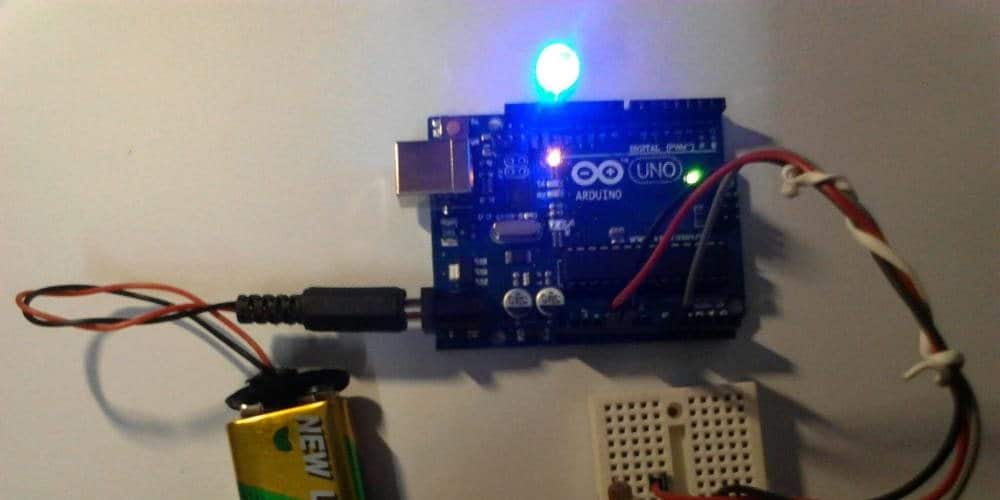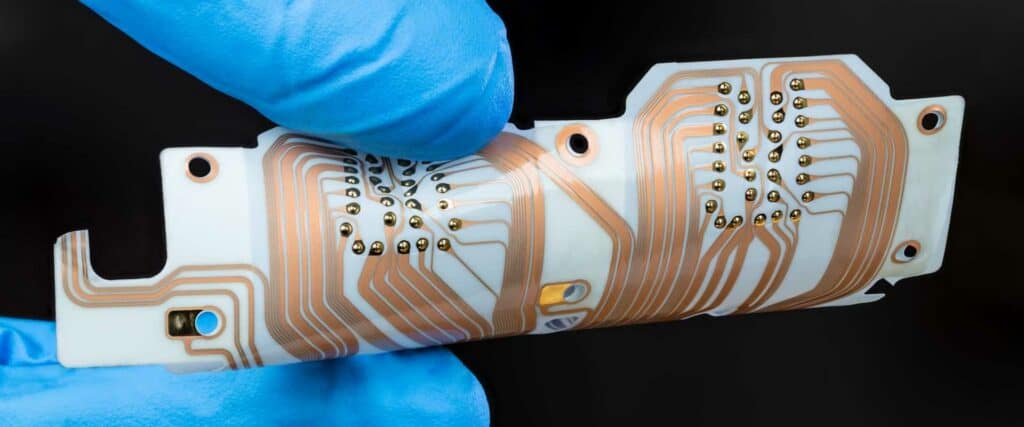Finger sensors, as the name suggests, are devices designed to analyze and monitor various aspects of the human finger. These sensors come in a wide variety of types and construction forms, catering to numerous applications in different industries. From healthcare and sports to security and virtual reality, finger sensors are on the rise, playing an increasingly important role in our daily lives.
The technology behind finger sensors varies significantly based on their purpose. Some common finger sensor types include capacitive, optical, piezoelectric, and thermal sensors, which can detect motion, pressure, temperature, and even biometric data. The construction and design of the sensors are integral to their functionality and usability, with innovations leading to seamless integration into wearables, mobile devices, and specialised equipment.
Understanding the wide array of finger sensor applications and their underlying technology is crucial for comprehending their potential impact on various industries. In the following article, we will delve deeper into the different types of finger sensors, their construction forms, and explore some practical applications, showcasing the extensive capabilities and possibilities they hold in a multitude of professional and personal uses.

Types of Finger Sensors
There are several types of finger sensors used in various applications. Each type has its unique construction and operational principles, which differentiate them from one another. In this section, we will discuss the following finger sensor types:
Capacitive Sensors
Capacitive sensors use the human body’s natural electrical capacitance as a means of detecting fingerprints. These sensors consist of an array of capacitor plates arranged in a grid-like pattern. When a finger comes into contact with the sensor, the change in capacitance is measured, which can be translated into a fingerprint image. Some advantages of capacitive sensors are:
- Good image clarity
- Low power consumption
- Compact size
However, they can be sensitive to environmental factors such as temperature and humidity.
Optical Sensors
Optical sensors use light reflection to capture an image of a fingerprint. Typically, they consist of an LED light source, a lens or prism, and a photodetector array. When a finger is placed on the sensor, the valleys and ridges of the fingerprint reflect different amounts of light, creating a contrast that is detected by the photodetector. Optical sensors offer:
- High-resolution images
- Relative insensitivity to environmental factors
But they tend to be larger and consume more power than capacitive sensors.
Thermal Sensors
Thermal sensors operate by detecting temperature differences between the ridges and valleys of a fingerprint. These sensors employ an array of small thermal sensors that measure temperature variations when a finger comes in contact with the surface. Key features of thermal sensors include:
- Resistance to external factors, such as dirt or grease
- Medium image clarity
However, they can be affected by ambient temperature changes and have slower response times compared to other sensor types.
Ultrasonic Sensors
Ultrasonic sensors use high-frequency sound waves to capture fingerprint images. These sensors emit ultrasonic pulses that bounce off the finger and return to the sensor, constructing an image based on the time it takes for the waves to return. Some characteristics of ultrasonic sensors are:
- Resistance to environmental factors, such as dirt or water
- High-resolution images
- Works well with wet or dry fingers
However, ultrasonic sensors typically have larger sizes and consume more power than other fingerprint sensor types.
Construction Forms

Silicon Based Sensor Construction
Silicon-based finger sensors are made from a silicon wafer, the same material used in the semiconductor industry. The silicon wafer is processed through a series of steps, such as photolithography and chemical etching, to create desired structures on its surface. These structures act as sensing elements, capturing the user’s fingerprint ridges and valleys when pressure is applied.
There are two main types of silicon-based finger sensors:
- Capacitive sensors: These work by detecting the change in capacitance due to the varying distance between the finger’s ridges and the sensing elements.
- Thermal sensors: These measure the temperature differences between the raised ridges and recessed valleys of the finger, as heat signature is unique for each individual.
PCB Based Sensor Construction
PCB (Printed Circuit Board) based finger sensors are built on a substrate, typically made of glass, ceramic, or polymer materials. The sensing elements are deposited onto the substrate using various techniques, such as screen printing or inkjet printing. Once the layers are formed, they are connected and integrated with electrical components to form the complete sensor.
The primary types of PCB based finger sensors include:
- Resistive sensors: These operate by measuring the change in resistance between the substrate and the user’s finger ridges when pressure is applied.
- Optical sensors: These use light and an image sensor to capture and analyze the user’s fingerprint pattern.
Both silicon and PCB based finger sensors serve distinct applications, with silicon sensors typically offering higher resolution and sensitivity, while PCB sensors are often more economical and versatile in design.
Applications and Uses
Biometric Security
Finger sensors play an essential role in biometric security systems, where unique physical and physiological traits are used for identification purposes. These sensors detect and capture fingerprint patterns, ensuring secure access to devices, buildings, and sensitive information. Some common applications include:
- Smartphone unlocking
- Secure facility access
- Banking and financial transactions
Health Monitoring
In the healthcare industry, finger sensors are utilized for continuous health monitoring and diagnostics. These sensors can collect data such as heart rate, blood oxygen levels, and temperature. Examples of finger sensor applications in health monitoring include:
- Pulse oximeters
- Smart wearables
- Remote patient monitoring systems
Gaming and Entertainment
Finger sensors enhance user experiences in gaming and entertainment by allowing for more immersive and realistic interaction with virtual environments. These sensors detect finger movements and gestures, translating them into on-screen actions. They are implemented in various gaming devices and platforms, such as:
- Virtual reality controllers
- Handheld gaming devices
- Motion-sensing consoles
Robotics
In the field of robotics, finger sensors can enhance the capabilities of robotic hands, enabling more precise and delicate manipulation of objects. These applications often use:
- Force-sensitive resistors (FSRs)
- Capacitive touch sensors
- Tactile pressure sensors
With the integration of finger sensors, robotics can achieve tasks such as:
- Grasping and holding fragile items
- Perceiving surface textures
- Human-robot interaction
Advancements and Future Development

Flexible and Wearable Sensors
Flexible and wearable finger sensors are a significant area of focus in recent advancements. These sensors offer increased versatility, can comfortably fit on the curves of human fingers, and can be seamlessly integrated into daily life. They are developed from materials like flexible polymers, conductive fabrics, and carbon-based materials that allow them to be soft and form-fitting while still maintaining their sensing capabilities.
The adoption of wearable finger sensors is becoming more widespread, with applications in various fields, such as:
- Sports and fitness
- Rehabilitation and physiotherapy
- Augmented reality and gaming
- Prosthetics and assistive technology
Artificial Intelligence and Machine Learning
Artificial intelligence (AI) and machine learning (ML) are playing an increasingly central role in the development of advanced finger sensors. By employing AI and ML algorithms, these sensors can process data more effectively and learn to recognize patterns faster, enhancing their sensing capabilities.
These advancements have both potential benefits and applications, such as:
- Improved data analysis: AI algorithms can process large amounts of data from finger sensors and identify patterns and trends more efficiently.
- Greater accuracy: AI algorithms can develop and improve the reliability, sensitivity, and specificity of finger sensors.
- Personalized user experience: Machine learning can be used to adapt individual finger sensor settings and feedback based on each user’s unique needs.
Note: If you are new to Markdown and would like a quick guide, here’s a helpful link to help you learn the syntax.
Choosing the Right Finger Sensor
Selection Criteria
When selecting a finger sensor, there are several key factors to consider:
- Application: What is the intended use of the sensor? Different applications, such as biometrics or robotics, will require specific sensor capabilities.
- Sensitivity: How precise does the sensor need to be? Evaluate your project’s needs for pressure, touch, or force detection.
- Size: Does the sensor need to fit in a small or tight space? Proper sizing for the application and housing is crucial.
Considerations
When choosing a finger sensor, it’s essential to keep these factors in mind:
- Compatibility: Ensure that the sensor is compatible with your project’s hardware, software, and power requirements.
- Durability: Some environments may expose the finger sensor to moisture, dust, or physical stress; check the sensor’s resistance to these factors.
- Ease of use: Evaluate if the sensor is user-friendly and easy to integrate into your project, and check for available documentation or tutorials.
Limitations
Every finger sensor will have its limitations, which might impact your decision:
- Price: Budget limitations could affect your sensor choices, but be cautious in sacrificing quality for cost.
- Latency: Be aware of any time delays in sensor response, which can impact some applications.
- Operating temperature range: Some sensors may perform poorly in extreme temperatures. Ensure the chosen sensor can function within your application’s specific temperature range.

